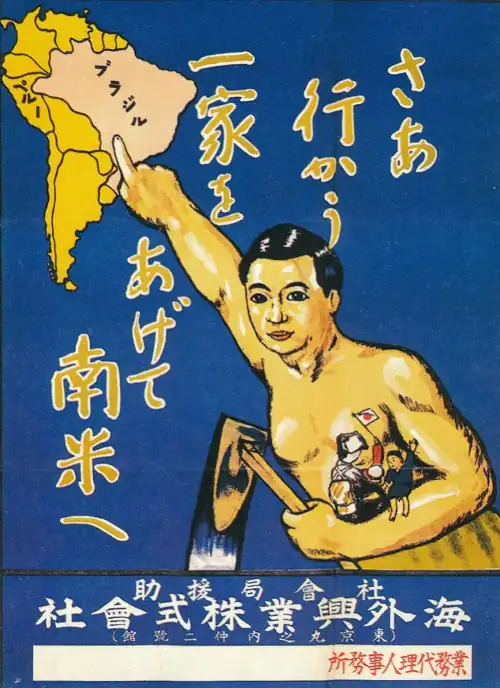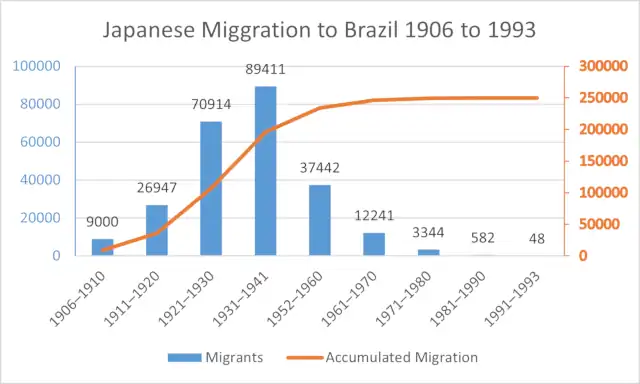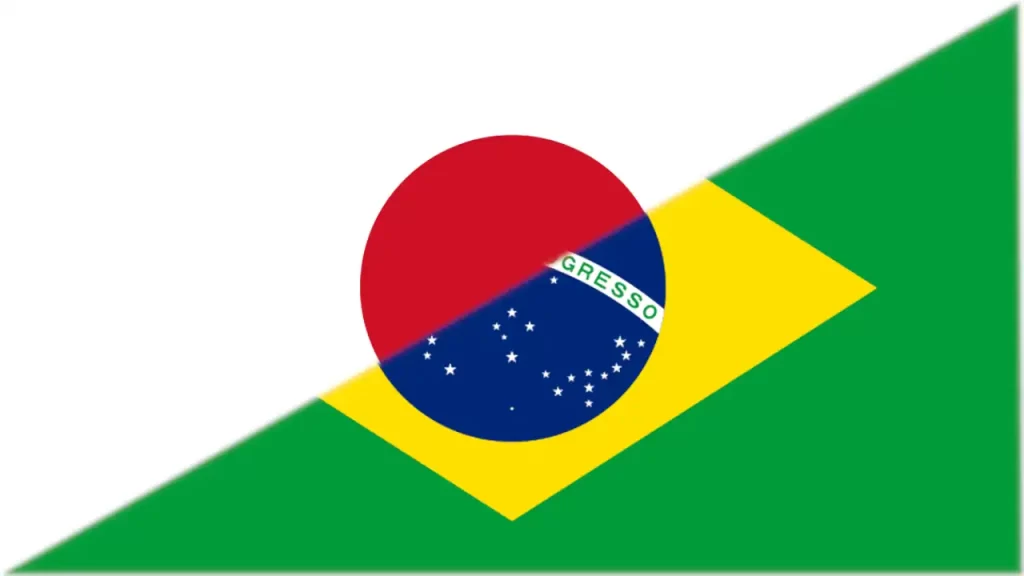The first Japanese migration arrived in 1908 and continued during the 1900’s. São Paulo is the largest Japanese community outside Japan. Most Japanese traveled to Brazil to work in agriculture as labor force.
First, Japanese settled in the States of São Paulo and Paraná in coffee plantation and farms. Later, their descendants become integrated to the Brazilian culture and reached higher working positions.
It is important to point out that Brazil was built by immigrants from all over the world, such as Portuguese, Italian, and Japanese people.
Nowadays, it is estimated that there are more than 2 million Japanese Brazilians.
Why Japanese migrated to Brazil in 1908?
The first immigrants arrived at port of Santo, São Paulo in 1908. Firstly, the Japanese migrated to Brazil to work in coffee farms. The immigrants replaced the African slaves that was abolished in 1888.
At the time, Brazilian main export product was coffee and sugar cane in large farms. During the XVIII and XIX centuries, African slaves were the main manpower used in Brazil. However, in 1888 the slavery was finally abolished in Brazil.
After that, Brazil needed labors to replace the slaves. In a first moment, Brazil invited Europeans, mainly the Italians, to migrate and work in coffee farms in São Paulo region. Due to the poor working conditions and low salaries, the Italian government prohibited the emigration to Brazil in 1902. Then, Brazil began to invite other nations to migrate.
During this period, Japan had a boom in poverty because of the end of feudalism in the country. Thus, Japan, had many poor labors in rural areas willing to migrate.
In 1907, Brazil and Japan signed a treaty in 1907 that facilitated the migration from Japan to Brazil. At the same time, the USA had prohibited the Asian migration because the difficulty to integrate Americans and Asians in USA’s territory.
How many Japanese migrated to Brazil?
The Japanese migration to Brazil began with a 781 people in 1908 on the Kasato Maru ship. Most of the Japanese came from Okinawa and arrived to work in coffee farms in São Paulo. From 1908 to 1910, nearly 15,000 Japanese arrived in Brazil.

The Japanese brought to Brazil new agricultural practices that were unknown in Brazil. However, there were conflicts between the landowners and immigrants because of difference in cultures.
Due to the Japanese skills, hardworking and discipline, many of those immigrants become property owner later. The first reported land acquired by Japanese immigrant happened on 1911 in State of São Paulo.
In 2000, it was estimated a population of 1,5 million Japanese Brazilian, that include migrants and Japanese descendant.
Japanese in São Paulo city

São Paulo was the main migration destination for Japanese during XX century. Most Japanese immigrants arrived in Brazil to work in agriculture, but their sons and daughters moved to cities to study. Then, São Paulo city was a destination for Brazilian Nisei, the second-generation of immigrant Japanese.
In São Paulo city, the “Liberdade” district is the main Japanese presence in the city. The district is located in the center of São Paulo and we can find many Japanese elements in the region. Some decades ago, this region was important for work and study. People can find in Liberdade Japanese restaurant, markets and cultural spot. During the week, “Liberdade” is a busy commercial area. In the weekends, there are a tourist movements and events.
As the Japanese community in Liberdade grew, other Japanese communities arise in São Paulo. However, no other São Paulo region has Japanese architecture like “Liberdade”. For example, the “Saúde” neighborhood is 5km for from Liberdade and it has many Japanese descendant living there today.
Japanese community in Brazil
The Japanese migration brought to Brazil some Japanese features that remain in Brazilian culture.More than a century after Japanese immigration to Brazil, those cultures are fully integrated. Japanese food is usual in Brazil, as well as the Japanese names are familiar to Brazilians.
In Brazil, it is typical to identify Japanese descendant as good students and workers.
In sports, the judo has strong roots in Brazil and it is taught regularly in many places. As a result of this, Brazil has several Olympic medals in judo. Also, the judo practice led to Brazilians jiu-jitsu, because the children had judo background that helps to fight jiu-jitsu.
Japanese food is usual in Brazilian larger cities. The food itself is customized for Brazilian taste that includes sweet sushi and all-you-can-eat Japanese restaurant.
Other Japanese features like Buddhism, Manga and Kumon can also be found in Brazil. Thus, Japanese and Brazilian cultures adapted themselves to survive together.

